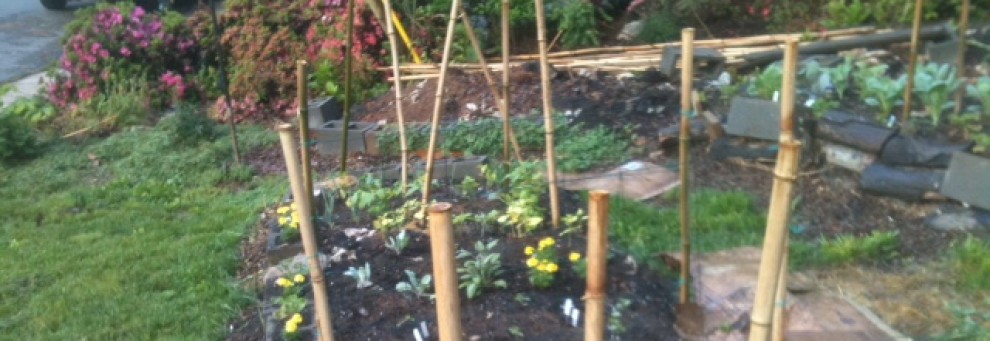One week until the Charlottesville farmers Market kicks off an 8+ month
run downtown . See https://www.facebook.com/CharlottesvilleCityMarket .
One of the things I look forward to in the first few weeks of the market
is spring asparagus ( beets too) . My current garden doesn’t work for
growing my own asparagus (though I may do this with some friends in their
garden.
Asparagus is a perennial vegetable that pops up every spring , but
unlike much of the rest of the KITCHEN GARDEN it takes a few years to
enjoy the benefits of these delicious spears.
Root crowns are planted in spring or fall and prepared to grow BUT can
not be harvested until the 3rd ( maybe some 2nd ) year. So we must learn
some patience and remember that THIS SPACE IS TAKEN.
So we care for “nothing” while harvesting beans and cukes and tomatoes
throughout the garden. BUT on the plus side- Well planted and cared for
plants can be productive for up to 20 years.
Aparagus is planted as “crowns” (year old plants) in a clean garden bed
in trenches 6″-12″ deep and separated 18″-24″ . The soil should be well
drained as the plants don’t like to have WET-FEET. Dig the trench and
work in 3-6″ of compost, manure and/or soil mix. Spread the soil in a
ridge in the trench. Place the “crowns” on this ridge spreading the roots
over mounded soil. Cover with enough well composted soil and mulch 4-6″
and water well.
YEAR 1
Do not harvest the spears in the first year, allow them to grow and cut
down dead foliage in the fall. At cutting top dress with compost.
During this year letting the asparagus go to seed will give the crown a
chance to establish and get strong. This will set it ( and you) for long
time supply of spears.
YEAR 2
During the second year, keep the bed thickly mulched, side-dress with
compost/manure in spring and early fall, and cut down dead foliage in
late fall. You may be able to harvest and enjoy a meal of two of spears.
YEAR 3
YUMMMMMMMM!
The asparagus can be harvested for a relativley short period (2-3 weeks)as soon as the spears start to show. You will want to keep a close eye on the bed, Clean it after winter so mulch and debris are not too deep. After harvest allow the “ferns” to grow- these plants feed the crowns/roots for future spear production.
Found a few blogs with similar info. ENJOY !!

















